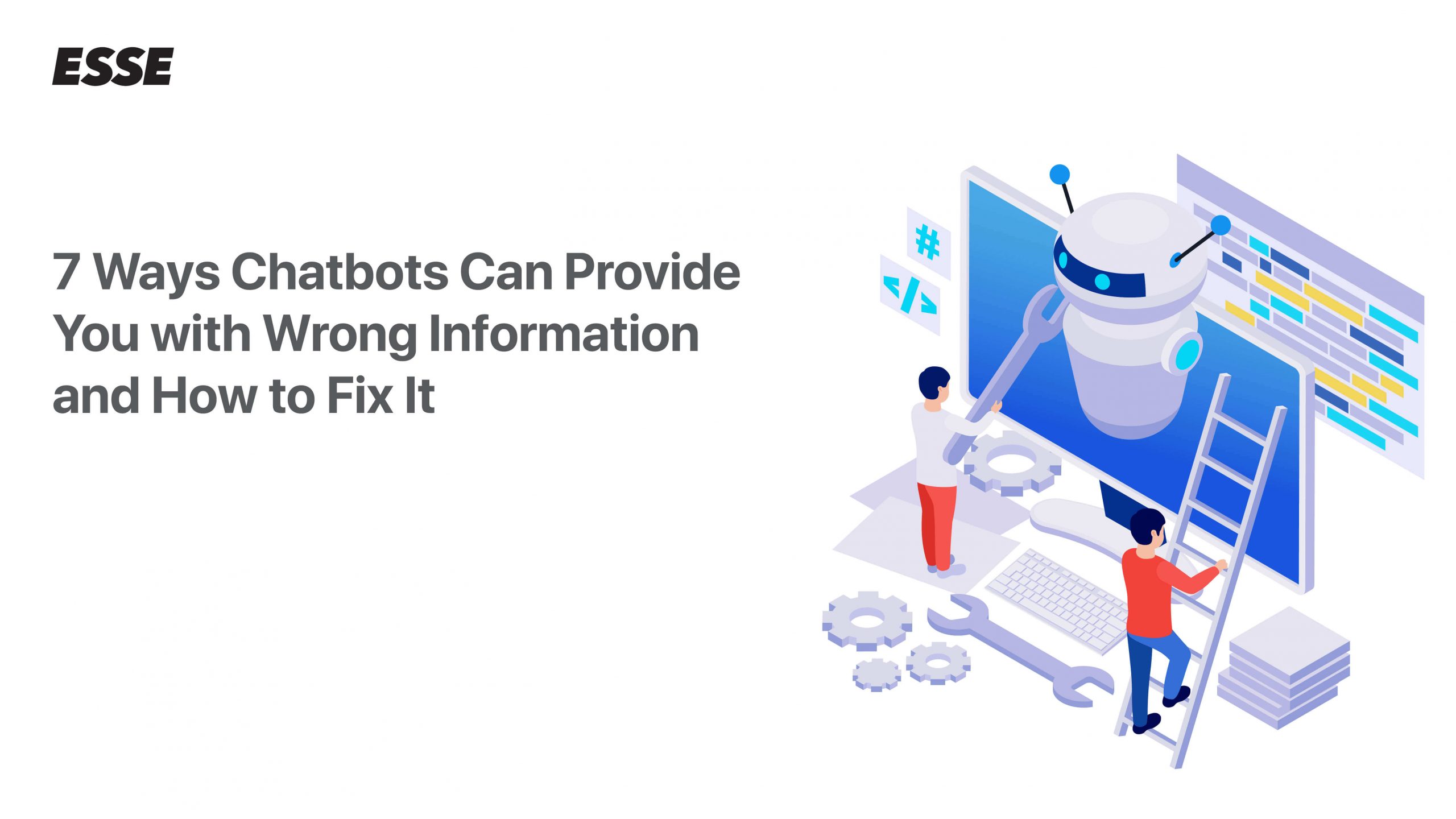Chatbots have become increasingly popular in recent years, providing businesses with an efficient and cost-effective way to engage with their customers. While chatbots can be incredibly useful, there are instances where they may provide users with incorrect information. In this post, we’ll explore seven ways chatbots can provide you with wrong information and provide solutions to fix them.
- Misunderstanding the User’s Intent
One common reason for chatbots providing inaccurate information is when they misunderstand the user’s intent. Chatbots use natural language processing (NLP) algorithms to understand the user’s request, but these algorithms aren’t always perfect. If a user’s request is ambiguous or phrased unusually, the chatbot may misinterpret it and provide incorrect information.
Solution: To address this issue, chatbots should be programmed to ask clarifying questions when they’re uncertain about the user’s intent. This helps ensure that the chatbot is providing accurate information.
- Lack of Adequate Training Data
Chatbots are only as good as the data they’re trained on. If a chatbot doesn’t have enough data to draw from, it may provide users with incorrect information. This is especially true for chatbots that use machine learning algorithms to learn and adapt to user requests.
Solution: To prevent this issue, chatbot developers should ensure that their chatbots are trained on sufficient data. The data should also be diverse and representative of the types of requests that users are likely to make.
- Outdated Information
Chatbots may also provide incorrect information if they’re not regularly updated with the latest information. This is especially true for chatbots that provide users with news or other time-sensitive information.
Solution: To address this issue, chatbots should be programmed to update their databases and knowledge bases regularly. This ensures that they have the latest and most accurate information available.
- Misunderstanding Slang or Jargon
Users may use slang or jargon that a chatbot doesn’t understand, leading to incorrect information being provided. This is especially true for chatbots that are used in specific industries or niches that have their own terminology.
Solution: To prevent this issue, chatbot developers should ensure that their chatbots are trained on the specific language and terminology used in the industry or niche. The chatbot should also be programmed to ask clarifying questions when it doesn’t understand a term.
- Technical Issues
Technical issues can also lead to chatbots providing incorrect information. For example, if the chatbot’s algorithm is experiencing a bug or if there’s a problem with the chatbot’s database, it may provide users with incorrect information.
Solution: To address this issue, chatbot developers should regularly test their chatbots for technical issues and address any problems as soon as they’re identified.
- Incomplete Information
Chatbots may provide users with incorrect information if they don’t have all the necessary information to provide a complete answer. For example, if a user asks a question that requires additional context, the chatbot may provide a partial or incorrect answer.
Solution: To prevent this issue, chatbot developers should program their chatbots to ask clarifying questions when necessary to ensure they have all the information needed to provide an accurate answer.
- Over Reliance on AI
Finally, chatbots may provide incorrect information if they’re over-reliant on AI and need more human oversight. While AI is incredibly useful, it’s not perfect, and it’s essential to have a human in the loop to ensure that the chatbot is providing accurate information.
Solution: To address this issue, chatbot developers should ensure that their chatbots have human oversight and that


Leave a Reply